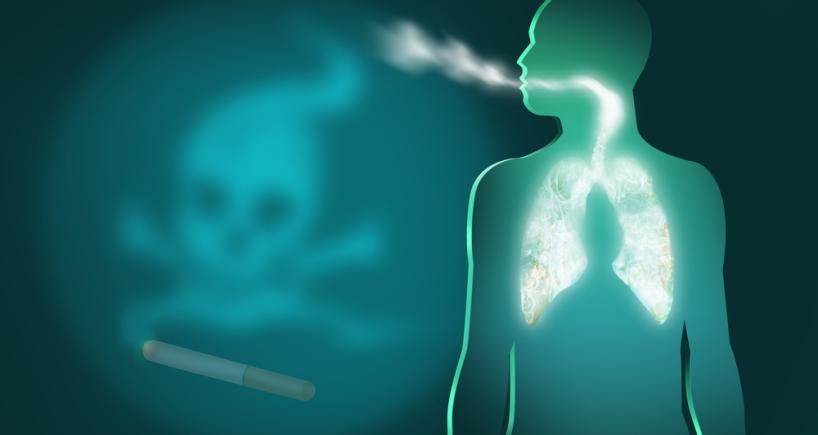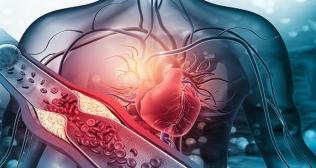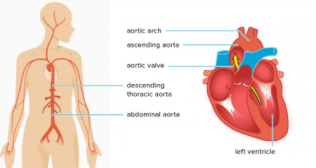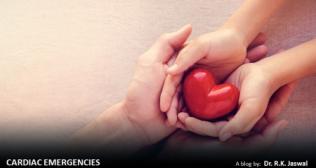
Tobacco and Cardiovascular Diseases - Dr. Zile Singh Meharwal
Coronary heart disease (blockages in arteries of the heart) is among the leading causes of death in India. Contrary to public perception, smoking-caused heart disease actually results in more deaths per year than smoking-caused lung cancer. Thirty percent of all heart disease deaths are caused by cigarette smoking and smoking is the single largest preventable cause of heart disease. In India, smoking is in many forms like cigarette smoking, bidi smoking, hookah smoking and tobacco chewing like khaini, jarda etc. and tobacco in all forms has been shown to be detrimental to cardiovascular system.
Globally, tobacco use accounts for 6 million deaths every year which is projected to increase to 8 million by 2030, if preventive measures are not in place. It is estimated that 11% of total global adult (30 years of age) cardiovascular deaths were attributable to smoking in 2000. This proportion was higher in men (17%) than women (5%) and industrialized (16%) over developing (7%) countries. India is the second largest consumer with more than one-third of adults (35%) using tobacco in some form or other and of which 21% using smokeless form exclusively. Though the mean age of initiation of daily users is 17.8 years, the Global Youth Tobacco Survey (GYTS) reported that tobacco use begins as early as 10 years of age in both boys and girls
Cigarette smoking is responsible for 40% of heart disease in those under 65 years of age in United States. Thirty percent of all heart disease deaths each year are caused by cigarette smoking.
- Light smoking (1-4 cigarettes a day) caused an increase in coronary artery disease to 11% compared to only 3.7% for nonsmokers.
- Smoking increased the risk of stroke by 40% in men and 60% in women.
- Smoking increases the risks for the following diseases:
- Hypertension
- Ischemic heart disease
- Pulmonary heart disease
- Cardiac arrest
- Cerebrovascular disease
- Atherosclerosis
- Aortic aneurysm
- Women who smoke and use oral contraceptives increase their risk of heart attack tenfold and run a risk of strokes and blood clots in their legs.
Tobacco smoke affects the heart by multiple means. It contains high levels of carbon monoxide. Carbon monoxide affects the heart by reducing the amount of oxygen the blood is able to carry. This means that the heart, lungs, brain, and other vital organs do not always receive enough oxygen to perform everyday functions. At the same time, nicotine causes an increase in heart rate and blood pressure. Over time, this causes extraordinary "wear and tear" on the cardiovascular system and vascular endothelium i.e. the inner lining of blood vessels. People who use tobacco are more likely to have heart attacks, high blood pressure, blood clots, strokes, hemorrhages, aneurysms, and other disorders of the cardiovascular system.
Smoking actually triples the risk of dying from heart disease. Cigarette smoking is a major cause of stroke by increasing clotting factors in the blood, decreasing HDL cholesterol levels, increasing triglyceride levels, and damaging the lining of blood vessels. The risk for stroke increases as the number of cigarettes smoked increases and it is not only the direct smoking that increases the risk of heart and other smoking related disease. Second hand smoke is a much greater problem than many people realize. Second hand smoke is a combination of the smoke given off by the burning end of a cigarette, pipe, or cigar and the smoke exhaled from the lungs of smokers. This mixture contains more than 4,000 substances, more than 40 of which are known to cause cancer in humans or animals and many of which are strong irritants.
In fact, long-term exposure to second hand smoke has been shown to cause a 30% increase in the risk of heart disease in nonsmokers. Exposure to second hand smoke also negatively affects cardiovascular health by decreasing exercise endurance, damaging blood vessel walls, and increasing the tendency of blood platelets to clot, contributing to heart attacks. Also, nonsmokers’ bodies tend to react more dramatically to tobacco exposure than do smokers’ bodies, so lower levels of smoke can cause adverse effects.
Quitting smoking helps in reducing risks of cardiovascular diseases in people who have been smoking for long. People who quit smoking dramatically reduce their risk of dying from heart disease. The body begins to repair itself almost immediately. Quitting can help people who already have heart disease. People who quit smoking can cut their risk of having another heart attack or dying of heart disease in half. When a smoker quits, the risk of heart disease death begins to fall very early, but it takes ten years for the risk to approach that of a nonsmoker. Quitting also reduces the risk of other circulatory diseases. People who quit smoking cut their risk of abdominal aortic aneurysm in half. The risk of having a stroke or hemorrhage is also reduced. Within five to 15 years, an ex-smoker’s risk of having a stroke is the same as that of someone who never smoked.
As soon as a person quits smoking, his/her body begins to repair the damage caused by tobacco use. Within a few days or weeks, exercise endurance and cardiovascular capacity improve, and HDL (protective, "good" cholesterol) increases. Within a year, the risk for most cardiovascular diseases will be cut in half. In 15 smoke free years, an ex- Most studies of cigar and pipe smokers reveal lower lung cancer and cardiovascular risks compared with cigarette smokers. Former smokers of only pipes or cigars show an intermediate risk of lung cancer when compared to current smokers who show a higher risk. However, pipe and cigar smokers show a higher risk of lung cancer than those who have never smoked these products.
As soon as a person quits smoking, his/her body begins to repair the damage caused by tobacco use. Within a few days or weeks, exercise endurance and cardiovascular capacity improve, and HDL (protective, "good" cholesterol) increases. Within a year, the risk for most cardiovascular diseases will be cut in half. In 15 smoke free years, an ex- Most studies of cigar and pipe smokers reveal lower lung cancer and cardiovascular risks compared with cigarette smokers. Former smokers of only pipes or cigars show an intermediate risk of lung cancer when compared to current smokers who show a higher risk. However, pipe and cigar smokers show a higher risk of lung cancer than those who have never smoked these products.
Many cigar and pipe smokers justify smoking a pipe or cigar by claiming they do not inhale. They may puff small amounts of smoke because pipes and cigars are much stronger in terms of nicotine than the average cigarette, and it is painful to the chest to inhale large amounts of pipe or cigar smoke. Pipe and cigar puffers do not need to inhale because these tobaccos have a much higher pH than cigarettes. Because of the higher pH, the user of these products needs to only hold the smoke in the mouth for absorption of nicotine to occur. Cigar and pipe smoking may be slightly safer than cigarette smoking but they are NOT safe.
The smokeless tobacco (snuff and chewing tobacco) user is exposed to more nicotine than the typical cigarette smoker. The average cigarette contains approximately 8 to 11 milligrams of nicotine, but what the smoker ingests is 0.5 to 1.5 milligrams of nicotine (a cigarette averages one milligram). The average pinch of smokeless tobacco is 2.5 grams. In a study published this year in a medical journal about the harmful effects of second hand smoking among hookah workers at a bar, the researchers found that the levels of carbon mono oxide and other smoke related harmful components in the blood of these workers were as high as heavy cigarette smokers placing them at the same risk for cardiovascular and other smoke related disease as heavy smokers. This study decimated the myth that hookah smoking is safe and the water in the hookah absorbs the harmful smoke components.
Categories
Clear allMeet the doctor

- Cardiac Sciences | Adult CTVS (Cardiothoracic and Vascular Surgery)
- Organ Transplant | Heart Transplant
-
35 Years
-
2000



















